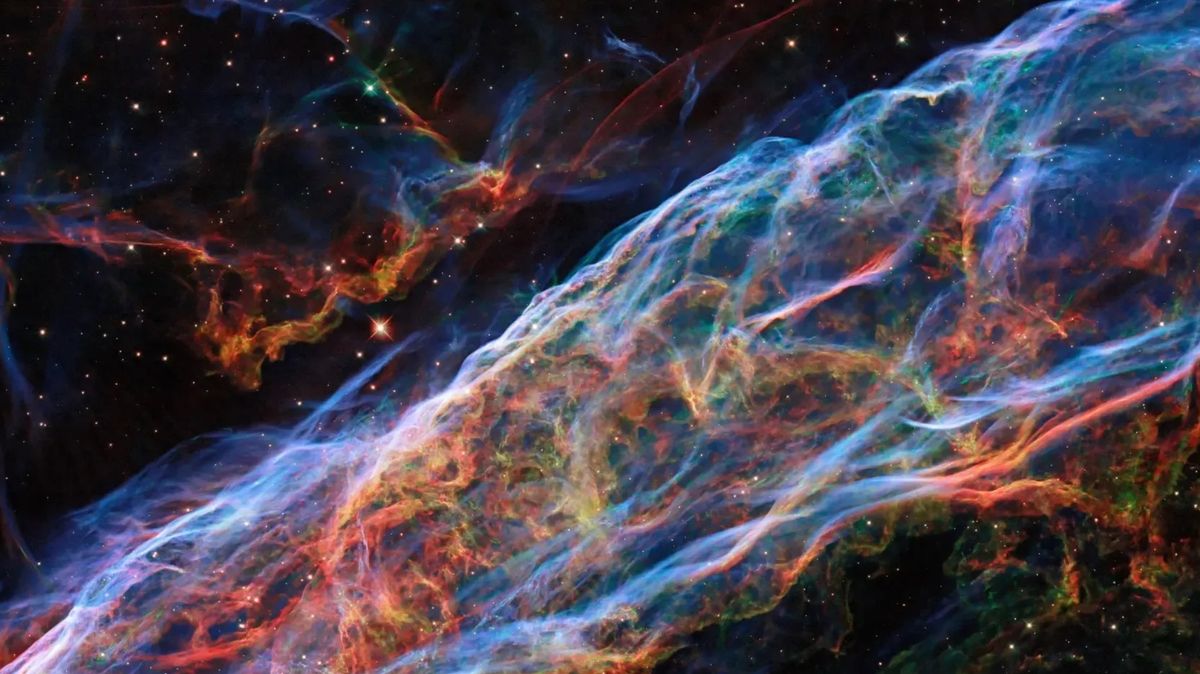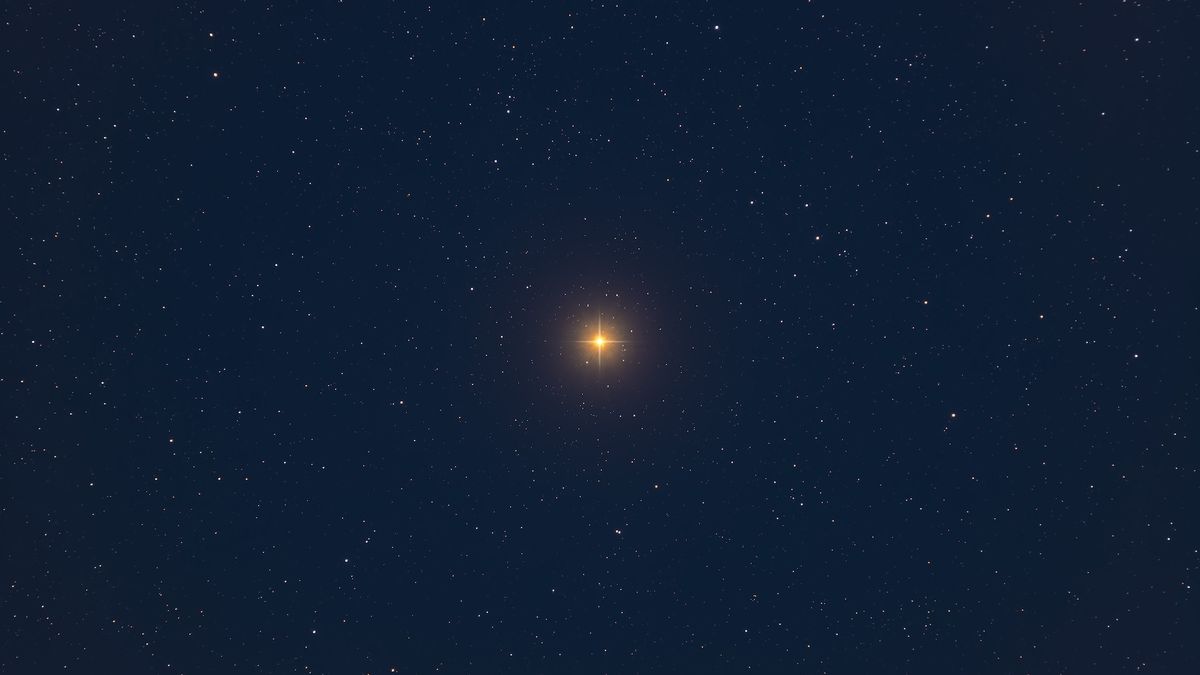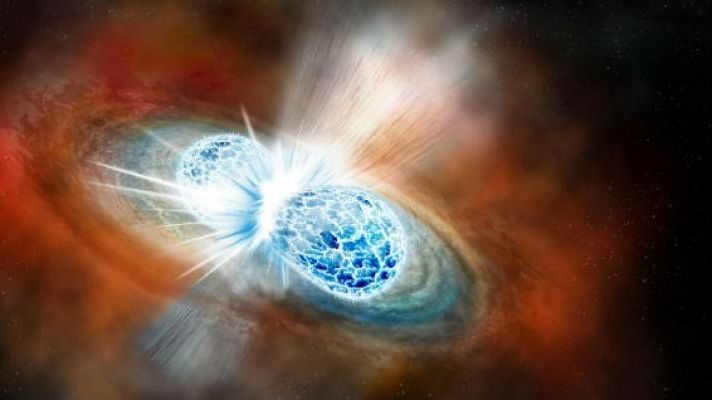About a billion years from now, the sun will have become much bigger, brighter and hotter, likely leaving Earth uninhabitable. However, a chance encounter with a passing star could save our planet by tossing it into a cooler orbit or helping it break free of the solar system entirely, a new theoretical study suggests. (Still, the chances of that happening are extremely slim.) Today, Earth lies within the sun’s habitable zone, a ring-shaped region within which planets may harbor liquid water. But our planet’s situation will worsen as the sun…
Read MoreTag: Stars and Galaxies
James Webb Space Telescope spies a newborn star in its cosmic crib (image)
Using the James Webb Space Telescope (JWST), astronomers have observed the luminous cloud of material that surrounds a newborn star, cocooning it in a crib of gas and dust. These so-called Herbig-Haro objects are created when stellar winds and jets of gas billow from newborn stars, causing shockwaves that slam into the gas and dust from which the star was born at high speeds. This particular Herbig-Haro object, which can be seen dominating the bottom half of this stunning new JWST image, captured with the telescope’s Near-InfraRed Camera (NIRCam) instrument,…
Read MoreMysterious blasts of radiation might stem from our universe’s most extreme stars
New research has revealed that different types of neutron stars, born when massive stars die, behave in a similar way. This might sound like a minor result, but in the grand scheme of things, it’s a finding that further supports the idea that these extreme dead stars — so dense a tablespoon of one equals something like the weight of Mount Everest — could be behind mysterious blasts of radiation called Fast Radio Bursts (FRBs). Millisecond-long bursts of radio emission FRBs seem to come from sources beyond the limits of…
Read MoreThe universe is expanding faster than theory predicts – physicists are searching for new ideas that might explain the mismatch
This article was originally published at The Conversation. The publication contributed the article to Space.com’s Expert Voices: Op-Ed & Insights. Ryan Keeley is a Postdoctoral Scholar in Physics, University of California, Merced. Astronomers have known for decades that the universe is expanding. When they use telescopes to observe faraway galaxies, they see that these galaxies are moving away from Earth. To astronomers, the wavelength of light a galaxy emits is longer the faster the galaxy is moving away from us. The farther away the galaxy is, the more its light has shifted toward the longer…
Read MoreNASA’s SPHEREx mission aims to map 450 million galaxies and 100 million stars
A new extraordinary NASA mission aims to map the sky in unprecedented detail and color. Construction has started on SPHEREx, a new space-based observatory that will map over 450 million galaxies in addition to 100 million stars in our own galaxy, across 96 color bands in the infrared range of the electromagnetic spectrum. Over its planned two-year lifetime, SPHEREx will map the entire sky, producing two maps a year, according to NASA’s Jet Propulsion Laboratory (JPL). Scientists at JPL have been assembling the telescope in recent months, joining its various…
Read MoreStar-birthing galaxies can hide supermassive black holes behind walls of dust
Greedy supermassive black holes blasting out powerful light may be hidden at the heart of star-birthing galaxies. The discovery could help researchers better understand how galaxies grow. Supermassive quasars powered by black holes are responsible for some of the most powerful and bright emissions of light in the universe, often outshining the combined light of every star in the galaxy around them. These emissions are created when black holes heat and rip apart surrounding matter, consuming some and channeling some into near-light-speed jets launched from their poles. Yet despite this…
Read MoreNASA rocket to study star-forming supernova remnant on Oct. 29
There’s no better way to understand the life cycle of stars than watching it unfold. This weekend, a NASA rocket will study a dramatic stellar event about 2,600 light-years from Earth in the constellation Cygnus. In that pocket of the universe, a once massive star, perhaps 20 times the size of our sun, exploded in a brilliant supernova that would have been bright enough for those on Earth to see with an unaided eye, even during the day. Although the blast occurred some 20,000 years ago, star matter ejected during…
Read MoreThe mysterious dimming of supergiant star Betelgeuse may finally be explained (photo)
Can a star bounce back from the verge of death? One star did — or at least appeared to. In early 2019, the red supergiant Betelgeuse began to dim. Some observers predicted that the dimming was a harbinger of the star’s end: That it was the first warning sign that Betelguese was about to go supernova. Astronomers are now certain that isn’t true. Images released by the European Southern Observatory (ESO) on Monday (Oct. 23) clearly show Betelguese returned to normal after the event. Related: Is the puzzling star Betelgeuse…
Read MoreHubble Space Telescope reveals an unexpected galaxy trio (photo)
A new image from the Hubble Space Telescope reveals a galaxy overshadowed by its larger, merging companions. Located roughly 500 million light-years from Earth lies a galactic pair collectively known as Arp-Madore 2339-661. The two galaxies are in the process of merging, according to a statement from the European Space Agency. One galaxy is known as NGC 7733 — the smaller galaxy seen in the lower right — and the other is NGC 7734 — the larger galaxy in the upper left. However, hidden in the star-studded spiral arm of…
Read MoreWhat happens when neutron stars collide? Astronomers may finally know
Scientists have used advanced computer modeling to determine the shape of a kilonova, an emission of light that follows the collision and merger of two neutron stars. Extraordinarily, the team discovered that rather than being shaped like smooth, homogeneous spheres or flattened, disk-like explosions, the kilonovas they simulated were filled with “blobs,” or “bubbles.” “This is a significant step forward in the theoretical understanding of what’s going on in neutron star mergers,” Stuart Sim, co-author of a study on the findings and a physicist at the University of Belfast, told…
Read More

